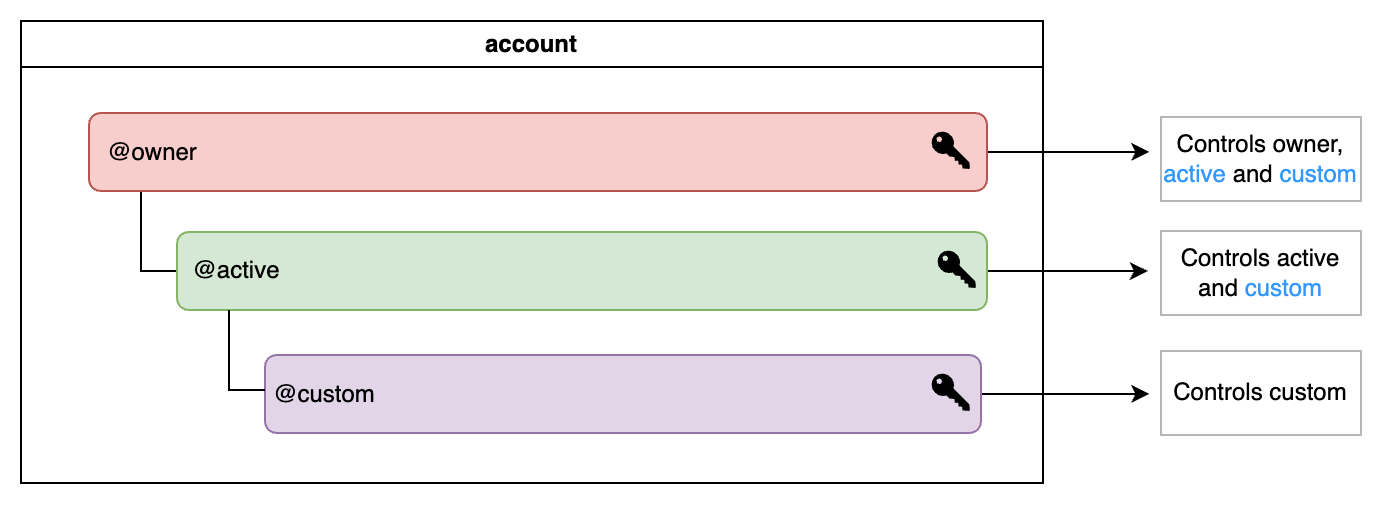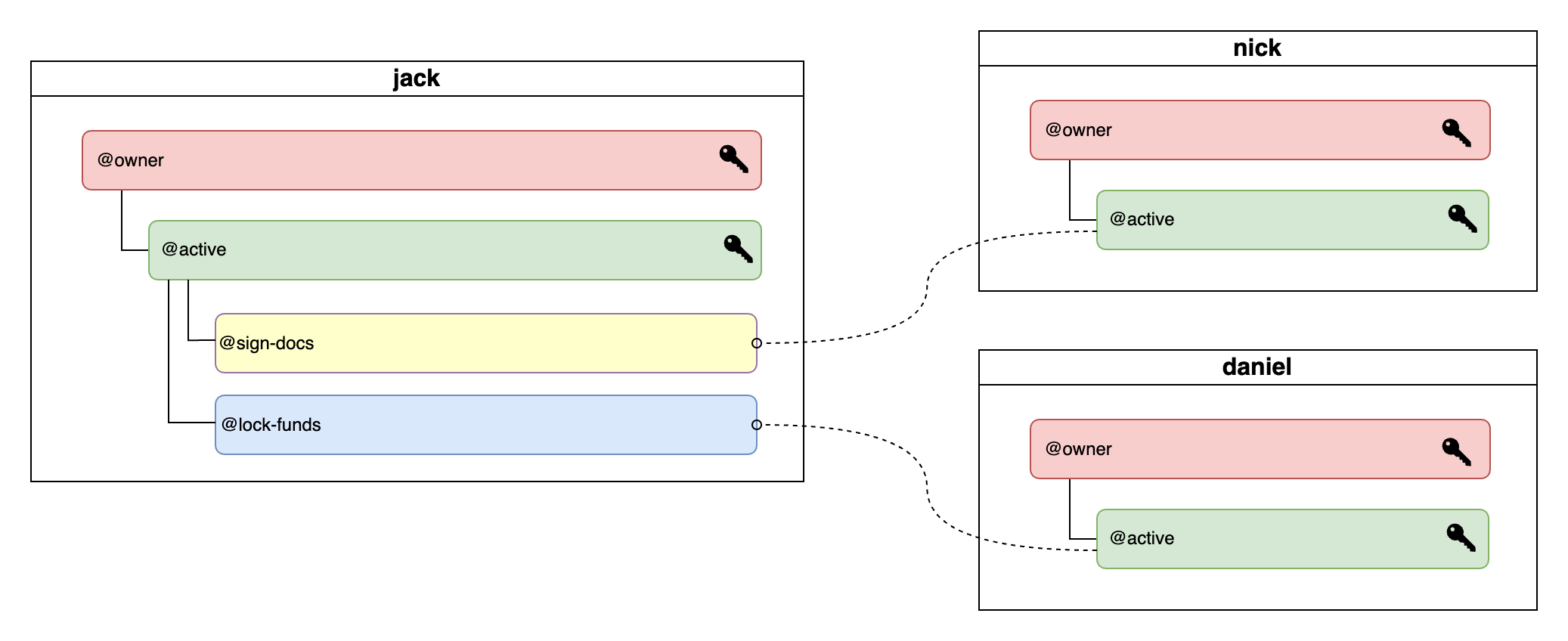Accounts & Permissions
A Wire account is a digital entity on the blockchain that identifies a participant, which can be an individual or a group. An account also represents the smart contract actors that send and receive actions to and from other accounts on the blockchain. Actions, which are the fundamental units of execution, are always encapsulated within transactions, allowing for one or more atomic actions to be grouped together.
See account name restrictions here.
Public & Private Keys
Every Wire account is ultimately controlled by a key pair (public and corresponding private key). While the public key is used to identify the account on the blockchain and can be publicly known, the private key which is used to sign each transaction must be kept secret at all times.
If you lose your private key, you will lose access to your account and all of its assets, smart contracts, and any other data associated with it.
Permissions
Each account has a set of hierarchical permissions that control what that account can do and how actions are authorized. By default, each account comes with two base permissions - owner and active. These two permissions are mandatory and they cannot be removed. A permission can only modify its own controls (keys or accounts) or those of its children, but never those of its parent.
Owner Permission
The owner permission is the highest in an account’s hierarchy, usually reserved for recovery scenarios when lower permissions are compromised. It can perform any action that lower permissions can, but keys for this permission are generally stored offline in cold storage to avoid misuse.
Active Permission
The active permission is the default for all actions, sitting just below the owner permission. It handles typical account activities, but cannot alter owner keys. Custom permissions usually are created under the active and linked to specific contracts or actions.
 .
.
A permission is linked to and controlled by either a public key or another account. This allows for the creation of complex account control structures, where multiple parties may control a single account while still having full autonomy over their own account's security.
See the diagram below as an example, where the account jack@active is controlled by both nick@active and daniel@active, and on the other hand, daniel@active is also controlled by katey@active.

Permission Mapping
It is possible to create custom permissions scoped to specific actions within a designated contract, also known as permission mapping. That permission will then only ever be able to interact with the contract action you specified. Such setup allows for very granular access permissions across accounts and hierarchical structures tailored to your needs.

Permission Evaluation
When determining whether an action is authorized to be executed, the wire-sysio software:
- first checks whether the signatures provided in the transaction are valid.
- then it proceeds to check the authorization of all the actions included in the transaction. This is where permissions are evaluated. If any action fails to be authorized, the transaction fails.
Authority Table
Each account's permission can be linked to an authority table used to determine whether a given action authorization can be satisfied. The authority table contains the target permission name and threshold, the factors and their weights, all of which are used in the evaluation to determine whether the authorization can be satisfied. The permission threshold is the target numerical value that must be reached to satisfy the action authorization (see authority schema below).
authority schema
| Name | Type | Description |
|---|---|---|
threshold | uint32_t | threshold value to satisfy authorization |
keys | array of key_weight | list of public keys and weights |
accounts | array of permission_level_weight | list of account@permission levels and weights |
waits | array of wait_weight | list of time waits and weights |
The key_weight type contains the actor's public key and associated weight. The permission_level_weight type consists of the actor's account@permission level and associated weight. The wait_weight contains the time wait and associated weight (used to satisfy action authorizations in delayed user transactions. All of these types allow to define lists of authority factors that are used for satisfaction of action authorizations.
Authority Factors
Every authority table linked to a given permission lists potential factors explicitly used in the evaluation of the action authorization. A factor type can be one of the following:
- Actor's account name and permission level
- Actor's public key
- Time wait
The potential actors who may execute the action are specified by either public key or account name in the authority table. Time waits are special factors which are satisfied by publishing a transaction with a delay in excess of the defined time. These carry weights as well that may contribute to satisfy the threshold.
Authority Threshold
Authorization over a given action is determined by satisfying all explicit authorizations specified in the action instance. Those are in turn individually satisfied by evaluating each factor (account, public key, wait) for satisfaction and summing the weights of those that are satisfied. If the sum equals or exceeds the weight threshold, the action is authorized.
Example:
The authority table for jack's release-code named permission is shown in the diagram below. In order to authorize an action under that permission, a threshold of 2 must be reached.
Since both katey@active and kyle@active factors have a weight of 2, either one can satisfy the action authorization. This means that either katey or kyle with a permission level of active or higher can independently execute any action under jack's release-code permission.
Alternatively, it would require two acounts each with weight of 1 to satisfy the action authorization - in this case account with public key SYS7Hnv4iBfcw2... and nick@active.
